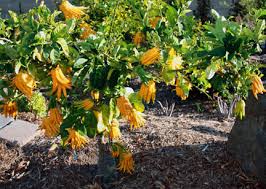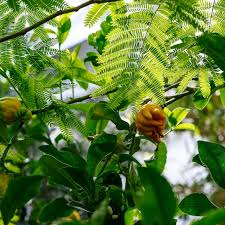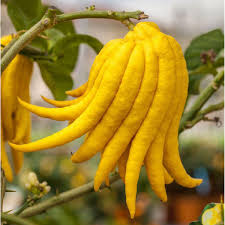The Unique and Enigmatic Citron Buddha Hand Plant
The Citron Buddha Hand plant, scientifically known as Citrus medica var. sarcodactylis, is an intriguing and rare variety of citron. Commonly referred to as Buddha’s hand, this fruit stands out due to its segmented, finger-like structure that bears a remarkable resemblance to the representations of Buddha’s hand. Known by various names across different languages including English, Chinese, Japanese, Korean, Vietnamese, and French, Buddha’s hand is a marvel in cultural, culinary, and horticultural contexts.
Origin and Characteristics
Buddha’s hand traces its origins to South or East Asia, likely northeastern India or China, where many domesticated citrus fruits have their roots. The plant itself is a shrub or small tree with long, thorn-covered branches. Its large, oblong leaves are pale green, measuring approximately four to six inches. The tree produces white flowers tinged with purple that grow in fragrant clusters.
The fruit of the Buddha’s hand is segmented into finger-like sections, which can either be splayed outward in an “open-hand” form or kept together in a “closed-hand” form. There are also half-fingered variations, where the base of the fruit is united while the tips are segmented. Unlike other citrus fruits, Buddha’s hand often contains no pulp or juice, with its fingers comprising mostly the white pith and sometimes a small amount of acidic pulp. Some fruits are even seedless.
Cultivation and Climate
The Citron Buddha Hand plant thrives in temperate climates, as it is sensitive to frost, intense heat, and drought. It can be propagated from cuttings taken from two to four-year-old branches and is frequently grafted onto robust rootstock to ensure healthy growth.
Uses and Cultural Significance

Perfumery
Buddha’s hand is highly fragrant, making it popular in China and Japan for perfuming rooms and personal items such as clothing. The strong citrus scent of the fruit is a natural air freshener and adds a pleasant aroma to any space.
Religious Offerings
In Buddhist traditions, the fruit is often presented as a religious offering. The shape of the fruit’s fingers is significant, as closed fingers are believed to resemble the act of prayer, symbolizing reverence and devotion. In China, Buddha’s hand represents happiness, longevity, and good fortune and is a common New Year’s gift and temple offering.
Ornamental Use
The fingered citron is also cultivated as an ornamental tree in gardens and patios. In the United States, the unripe fruits are sometimes marketed under the trademark “goblin fingers” as a decorative item for Halloween, capitalizing on their unusual and intriguing appearance.
Culinary and Medicinal Applications

Though primarily valued for its form and fragrance, Buddha’s hand is also utilized in culinary and medicinal contexts. The zest and peel can be used in a variety of dishes, such as salads, marinades, baked goods, and beverages. Its intense, floral citrus aroma makes it a unique addition to any recipe that calls for lemon or orange zest. The peel can also be candied, adding a sweet, aromatic element to desserts.
In traditional medicine, the dried peel of immature Buddha’s hand fruits is prescribed as a tonic. Its medicinal uses reflect the fruit’s long history of being valued not just for its unique appearance but also for its health benefits.
Conclusion
The Citron Buddha Hand plant is a remarkable fusion of cultural significance, aromatic appeal, and culinary versatility. Its distinctive appearance and multifaceted uses make it a fascinating subject of study and a prized possession for gardeners, chefs, and those seeking unique home décor. Whether used as a fragrant ornament, a symbolic religious offering, or a culinary ingredient, Buddha’s hand continues to captivate and inspire with its extraordinary presence and rich heritage.




